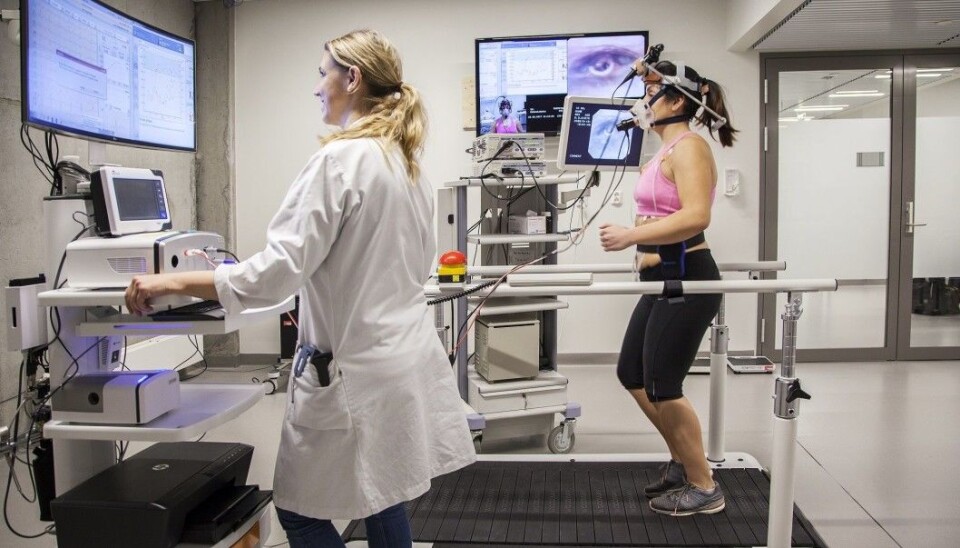
Many diagnosed with asthma may actually have EILO
EILO, or Exercise-Induced Laryngeal Obstruction, is a condition where the voice box closes down during vigorous exercise. Norwegian researchers believe many people with this condition are misdiagnosed and are given the wrong treatment.
Asthma and Exercise-Induced Laryngeal Obstruction, called EILO, are two very different medical conditions. While asthma patients primarily have difficulty exhaling, people who have EILO struggle to inhale.
They struggle the most when they go all-out physically, and right afterwards.
And while asthma is a condition that can be triggered by multiple causes that irritate or inflame the airways, EILO is primarily a problem with the throat.
When the body works hard, such as during sports or play, the throat closes down instead of opening as it should.
Incorrect diagnosis and treatment

EILO isn’t dangerous, but it can be scary. Children and young adults with the condition may even stop being active because it’s simply too uncomfortable, says Hege Clemm, a medical doctor and senior consultant at the Children's and Youth Clinic at Haukeland University Hospital.
It’s also not uncommon for children to first be given an asthma diagnosis, because it can be difficult to distinguish between the symptoms of the two conditions. And small children can't always explain exactly what they are experiencing.
As a result, a number of kids are given asthma medications, and some continue with the medicine even if their problems don’t resolve. But asthma medicine does not work on EILO, Clemm says.
“The vast majority – 80-90 per cent —of people who come to us for an examination have been on asthma medications. Our calculations show that up to 70 per cent don't need asthma medicine at all,” she said.
Some children who come to the clinic have been investigated previously and have still gotten the wrong diagnosis. Some have had dramatic experiences with EILO.
“We’ve heard stories about children who have come in by air ambulance and have been put on large doses of steroids and other asthma medications. But then it turns out that the problem is that their throat is closing up,” she said.
Understanding the problem helps
Some children that have come to Clemm have not been able to play outside or play football with friends because it has been so difficult for them to breathe.
Many are frightened when their throat closes up, but Clemm says it is important that people realize that EILO is not dangerous.
EILO is diagnosed with the aid of small flexible laryngoscope, which is put down the nose to see what is going on in the throat.
“We then film the throat from rest to maximum effort. This is called a CLE test. We mostly use a treadmill, but some people bicycle, and others have used rowing machines or a counter-current swimming pool. This allows us and the patient to see with their own eyes what happens when they have problems,” she said.
Just understanding what is happening often helps patients a lot, Clemm and colleagues say. Most EILO patients do not need much more treatment than that.
“Patients can see on the TV screen what happens when they do breathing exercises, which gives them a kind of Eureka moment. They often feel that they are given a whole new life afterwards and can be active again,” she said.
This procedure works for roughly 90 per cent of patients. The remaining 10 per cent need surgery.
Learning to breathe differently
When EILO patients feel their throat begin to close up, it can trigger a vicious cycle of hyperventilation and crying that aggravates the problem.
She and her colleagues find that patients gradually learn how to cope with their symptoms. One of the tricks they learn in treatment is to relax their throat when they breathe.
The patients learn to open their chest, breathe with their stomachs and not put stress on their throat. And they learn to recognize what it feels like physically when their throat opens and closes.
Some people need more time and individual treatment, however. A speech therapist who specializes in throat-opening exercises can help.
Clemm says it’s not clear how many people have EILO, although she thinks it’s quite common. She says in countries that have examined how many people have EILO, the incidence is between 5 and 7.5 per cent.
“When I play the sound of a person choking from EILO for people either in Norway or elsewhere in the world, many people recognize the sound from the gym or on the sports field,” she said.
------------------------






























